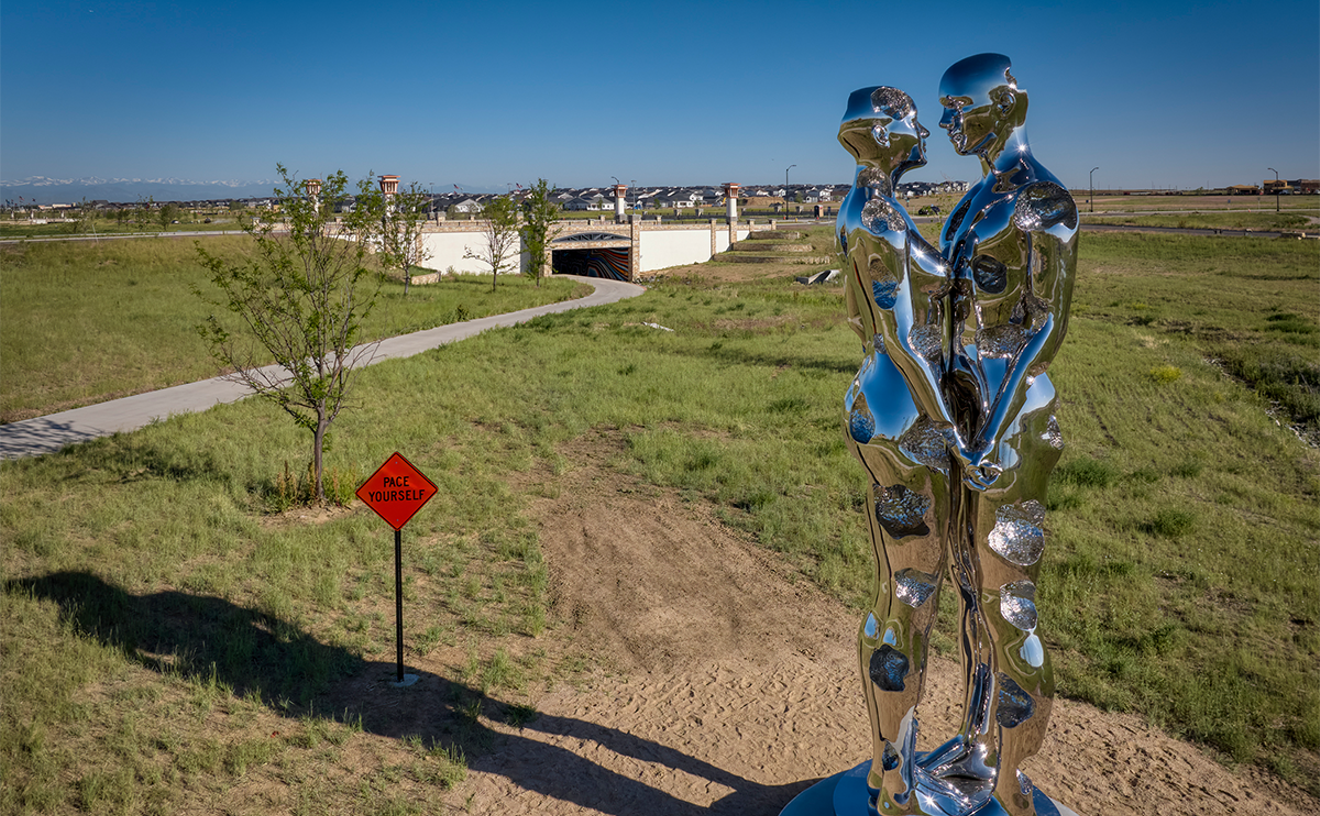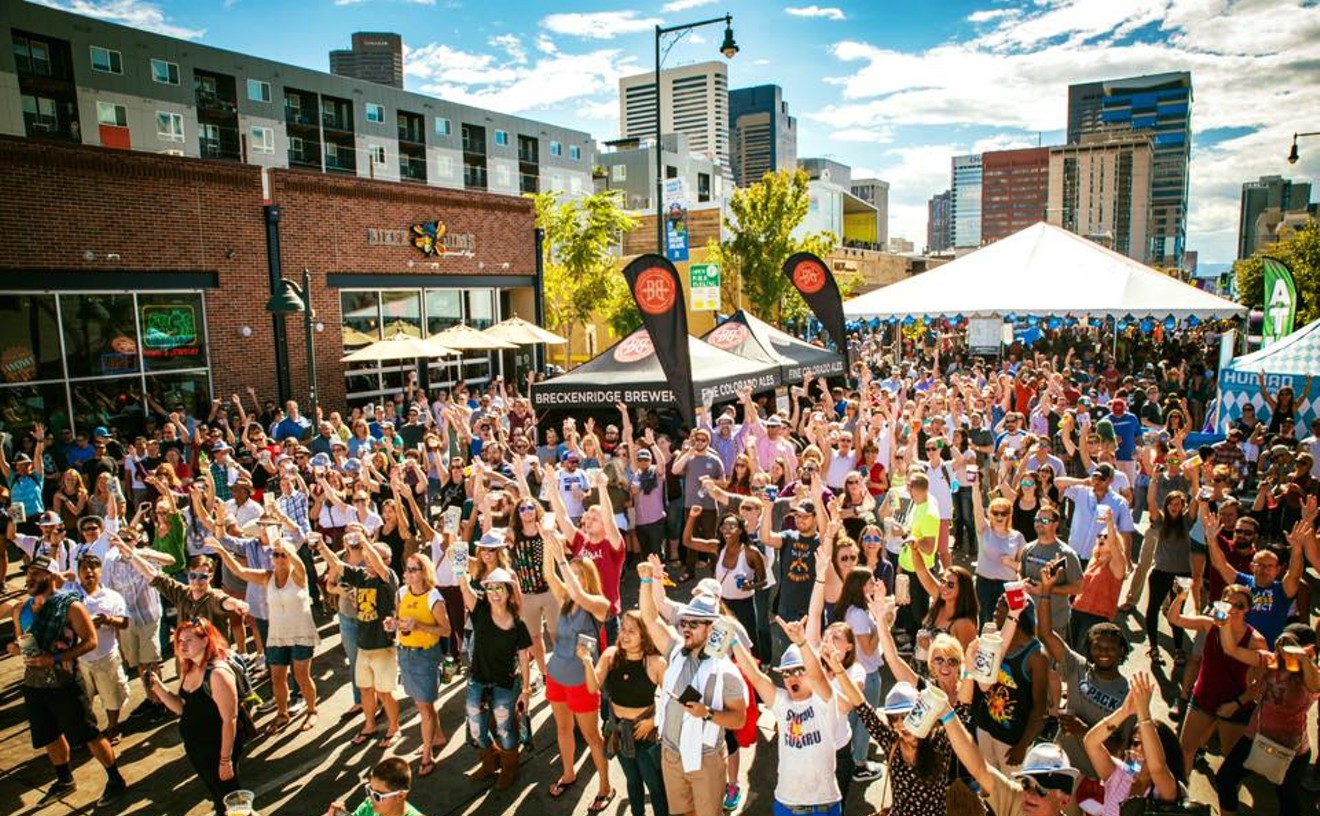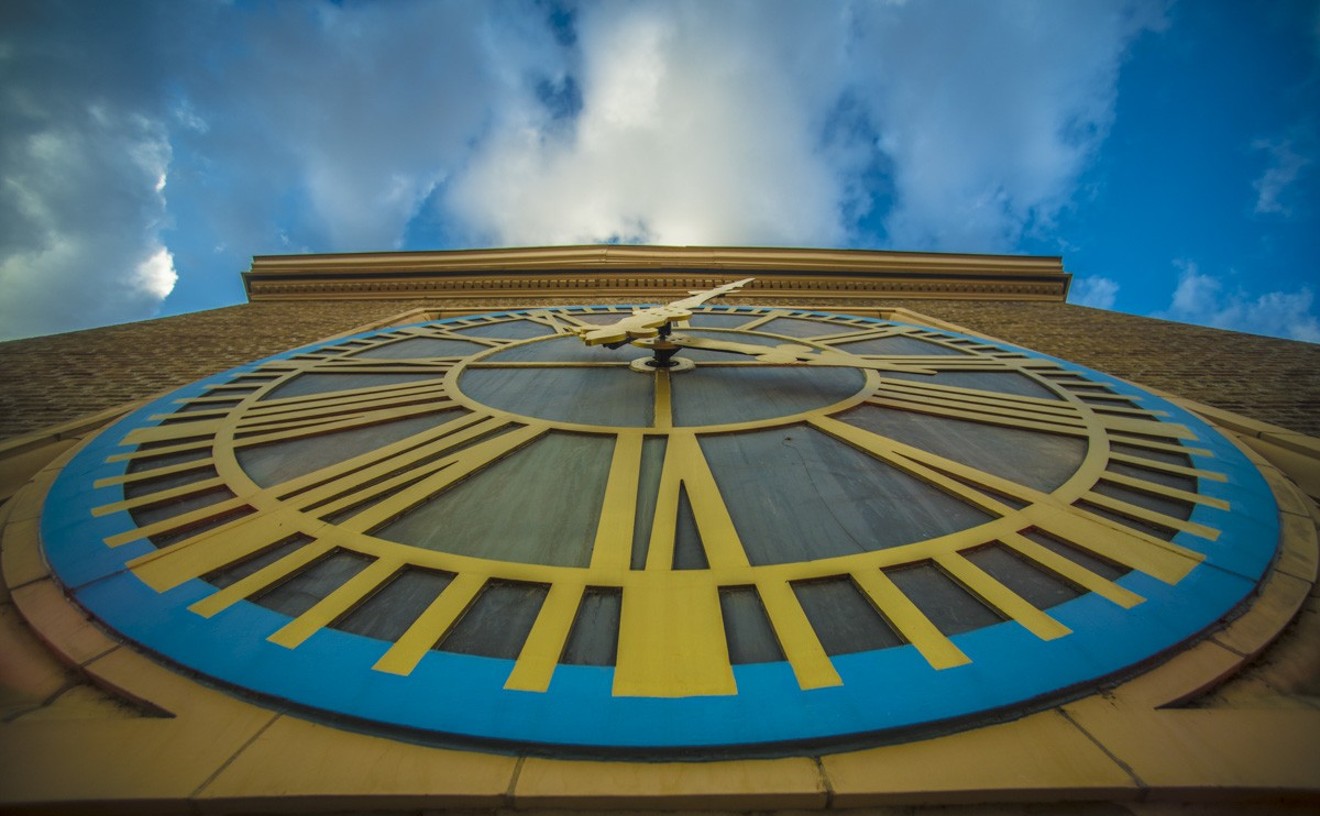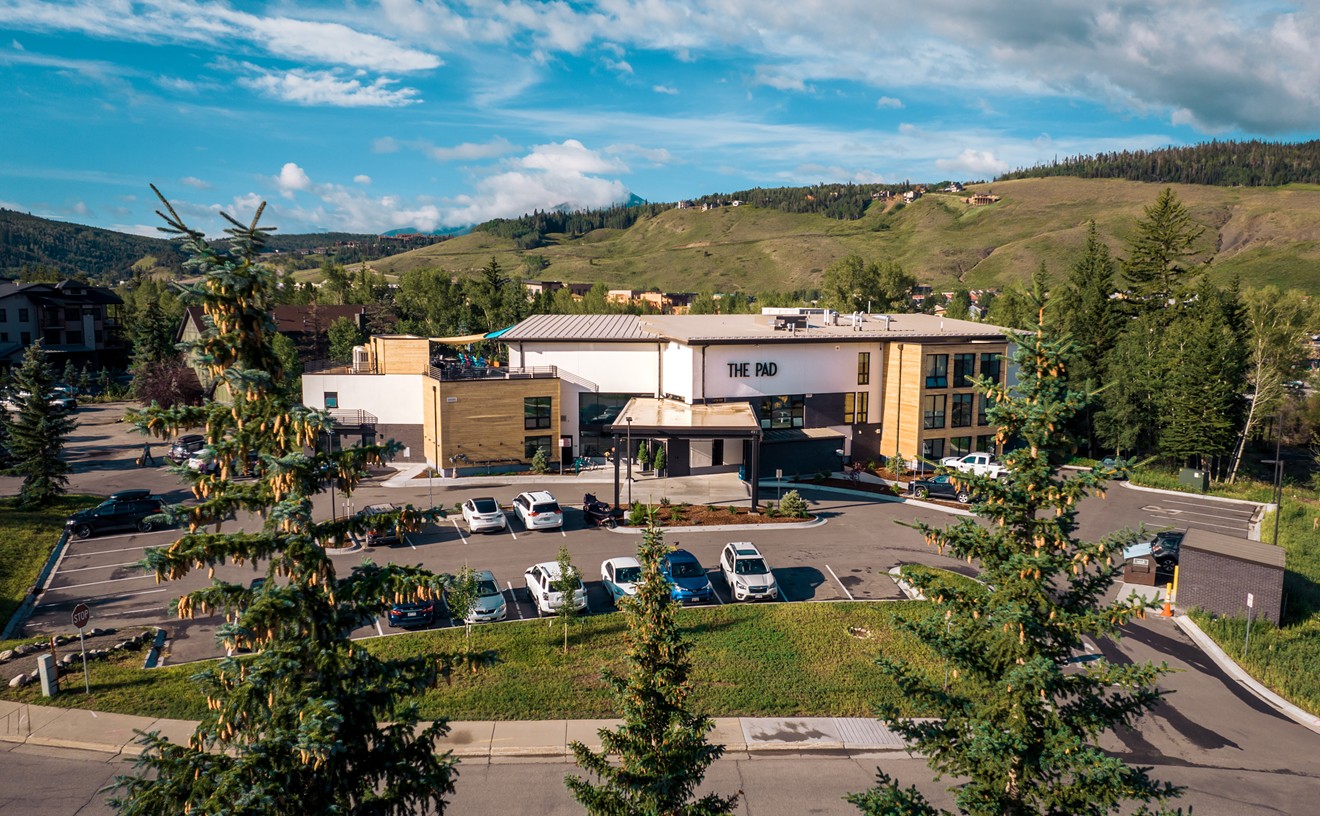I had several reasons for feeling this way. First, Art & Conflict, which was curated by Collin Parson and Kristin Bueb, is a theme show, and I can’t tell you how many theme shows I’ve seen that look like nothing more than a shuffled deck of cards arrayed around an exhibition space. My second concern was the theme itself, which invited a lot of “message” art; that kind of work is very hard to pull off, since so many pieces wind up being all message, or having a message in title only. And if that weren’t enough, Art & Conflict is a juried show, which seemed a preemptive strike three. When I walked through the doors, however, all my doubts disappeared immediately. Parson and Bueb somehow pulled it off: Art & Conflict is loaded with paintings, sculptures, installations, works on paper, photo-based pieces and video — even a video game — and nearly everything is not only worth seeing, but worth thinking about, too.
Some of the selected artists have long made political content a keystone, most notably Jeffrey Gipe, who creates work addressing Rocky Flats, the former nuclear-weapons plant sixteen miles northwest of Denver that never made another plutonium trigger after an FBI raid in 1989. “Impression,” an oil painting on Dow Chemical Styrofoam (Dow was the government’s first plant manager), depicts the majestic setting of the plant as seen from the air, with the Front Range of the Rockies in the background. This bucolic view contrasts with the many dead-white rectilinear shapes that Gipe has cut out of the painting, revealing the foam beneath and laying out the footprint of Rocky Flats in the foreground; the piece is elegantly chilling. “Signature,” an enormous installation by the artist known as Bug, is also at once elegant and disturbing. It looks like a banquet dining room with dozens of small tables arranged in a grid, each set for one person with china and silverware on a white tablecloth. On every plate but the last is a pile of bones inscribed with the name of a particular genocide; the final plate is empty, meant to represent the next one. Though Bug definitely owes a debt to Judy Chicago’s “Dinner Party,” “Signature” has its own unique character.
Many other artists included in Art &Conflict address war and genocide, arguably the exhibit’s main current. Abstractionist Sangeeta Reddy, for instance, uses her painting “Mogadishu Parade,” a brushy all-over composition incorporating press clippings, to visually translate the civil war in Somalia; the title refers to a notorious event in which the bodies of dead American soldiers were dragged through the streets of Mogadishu. Sue Simon introduces war narratives in two color-field abstractions from her “Science of War” series, which both further her ongoing exploration of science and examine science’s central role in advancing destructive technology. One piece, representing atomic weapons, has the formula “E=MC2” on a ground of colors defined by scattered spear-like elements; the other includes formulas for chemical weapons, including mustard gas, set against blobs of color and meandering white lines. Though Simon is not known for works with political messages, these two paintings are instantly recognizable as her work, and they fit her signature approach perfectly.

BAAM Torch (center), by the BAAM Collective; paintings by (on left) Irene Delka McCray and Sue Simon (on right).
Wes Magyar
Tony Ortega, a dean of Colorado’s Chicano art movement, is going through an even more radical stylistic shift. Known for slightly abstracted figural work depicting Latinos in everyday situations, over the past several years Ortega has been adding commercial and pop-art elements to the backgrounds, and some pieces are completely taken over by this sort of mass-produced imagery. Though Ortega still creates paintings, he’s readily embraced digital technology, too, producing photo-based prints and videos like the fast-paced “E-Spaghetti Western.” This flashing strobe light of a digital cartoon is a mashup of American symbols, including Mickey Mouse and Donald Trump, as well as Mexican ones, like Día de los Muertos skeletal figures and the bright colors of an outdoor market. There are even cartoon images of the border wall.

Paintings by (from left) Natascha Seideneck, Marti Lawrence Wolf, James Milmoe, Joyce Dallal, George Rivera, Kelton Osborn, Shelley Rossell.
Wes Magyar
A show of this type, at this time, is both risky and brave, especially in the suburbs — but Parson says the response has been overwhelmingly positive. While a few viewers dismissed Art & Conflict because of the political leitmotif seen throughout, he’s noticed many more carefully working their way through the exhibit, taking in the art and reading the accompanying statements. You should, too.
Art & Conflict, through November 12, Arvada Center, 6901 Wadsworth Boulevard, 720-898-7200, arvadacenter.org.















